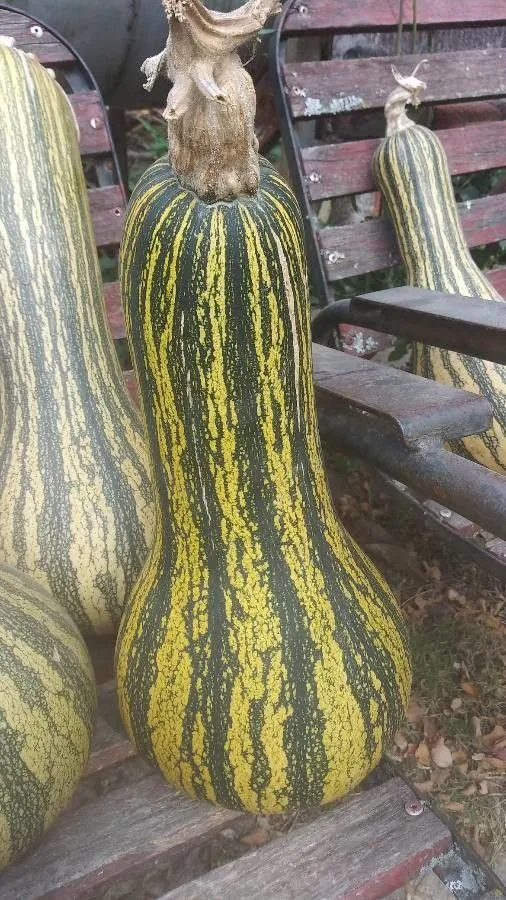
Author: C.Huber
Bibliography: Nursery Cat. (Charles Huber Bros. and Co.) 1867(Cat. Graines): 8 (1867)
Year: 1867
Status: accepted
Rank: species
Genus: Cucurbita
Vegetable: False
Observations: Mexico to Nicaragua
Cushaw (Cucurbita argyrosperma)
The Cushaw, scientifically known as Cucurbita argyrosperma, is a notable member of the Cucurbitaceae family. This plant is highly valued for its culinary versatility and its traditional significance in various cultures. The Cushaw hails from a geographical range that stretches from Mexico to Nicaragua, where it thrives in the warm climates of these regions.
The Cushaw plant is easily recognizable by its distinctive fruit, characterized by a long neck and a bulbous bottom. The skin of the fruit is typically creamy white with green or yellow stripes. The flesh is sweet and firm, making it an excellent choice for a variety of dishes, including pies, soups, and stews. Due to its resilience and ability to store well, it has been a staple in numerous households throughout its native range.
Historically, Cushaw was cataloged as early as 1867 by Charles Huber in a nursery catalogue, highlighting its agricultural importance even in the 19th century. Its enduring popularity can be attributed to its robust growth habits and the ease with which it can be cultivated. Gardeners and farmers appreciate its resistance to pests and diseases, as well as its adaptability to different soil types and growing conditions.
Beyond its practical uses, Cushaw also holds cultural significance. In the regions where it is traditionally grown, the plant is often embedded in local culinary traditions and seasonal celebrations. Its presence in gardens and markets is a testament to its enduring legacy and the role it plays in the agricultural heritage of these communities.
In conclusion, the Cushaw is more than just a plant; it is a symbol of resilience and tradition. Its ability to thrive in various environments, coupled with its culinary and cultural contributions, underscores its importance in the regions from Mexico to Nicaragua. Whether used in a savory dish or a sweet dessert, the Cushaw continues to be cherished by many who appreciate its unique qualities and historical significance.
En: Cushaw
Es: Calabacilla, Calabaza de caballo, Calabaza pipiana, Chicayota, Pipían
© copyright of the Board of Trustees of the Royal Botanic Gardens, Kew.
© copyright of the Board of Trustees of the Royal Botanic Gardens, Kew.
© copyright of the Board of Trustees of the Royal Botanic Gardens, Kew.
Taken Jun 3, 2021 by Leonardo Pascual (cc-by-sa)
Taken Oct 15, 2022 by valerie Lamar (cc-by-sa)
Family: Myrtaceae Author: (F.Muell.) K.D.Hill & L.A.S.Johnson Bibliography: Telopea 6: 402 (1995) Year: 1995 Status:…
Family: Rubiaceae Author: Pierre ex A.Froehner Bibliography: Notizbl. Bot. Gart. Berlin-Dahlem 1: 237 (1897) Year:…
Family: Sapindaceae Author: Koidz. Bibliography: J. Coll. Sci. Imp. Univ. Tokyo 32(1): 38 (1911) Year:…
Family: Asteraceae Author: A.Gray Bibliography: Pacif. Railr. Rep.: 107 (1857) Year: 1857 Status: accepted Rank:…
Family: Fabaceae Author: Medik. Bibliography: Vorles. Churpfälz. Phys.-Ökon. Ges. 2: 398 (1787) Year: 1787 Status:…
Family: Aspleniaceae Author: (Cav.) Alston Bibliography: Bull. Misc. Inform. Kew 1932: 309 (1932) Year: 1932…